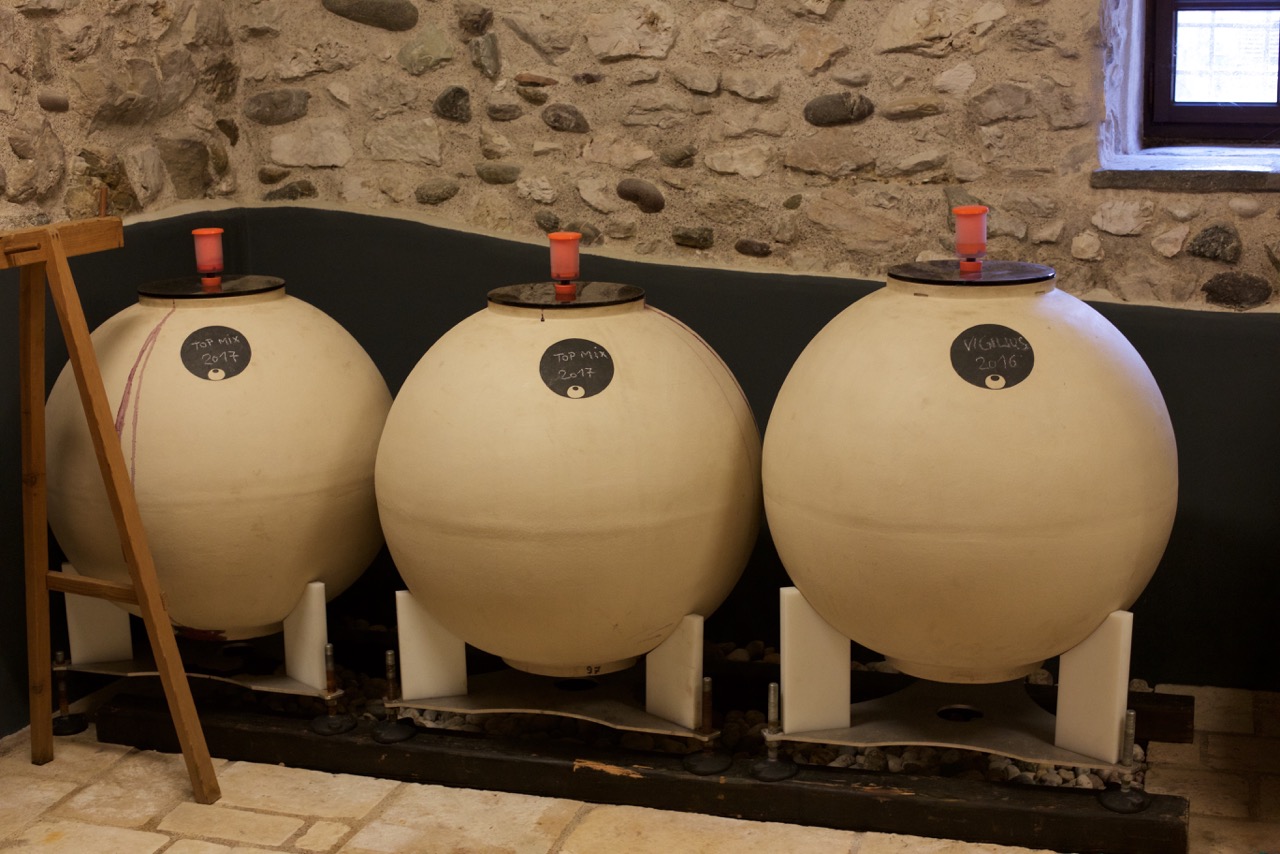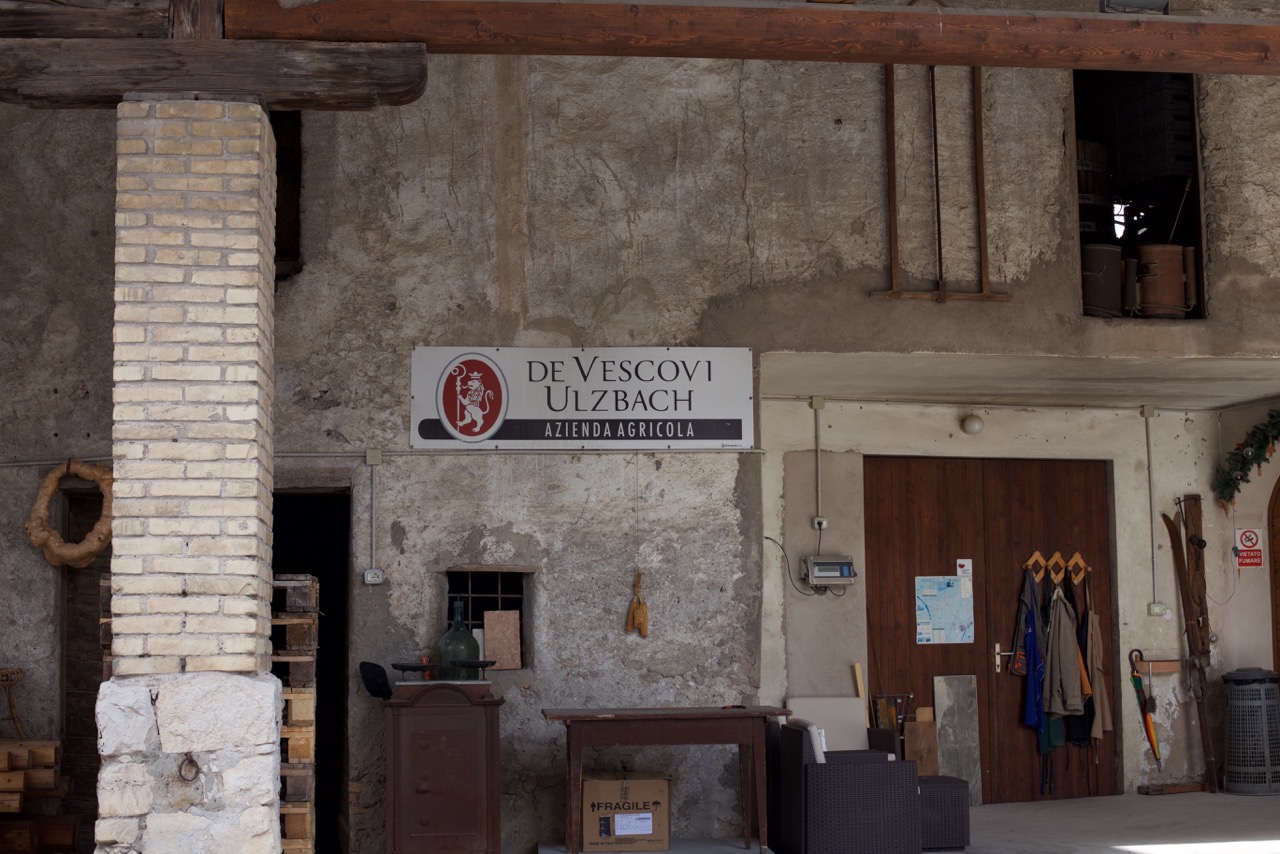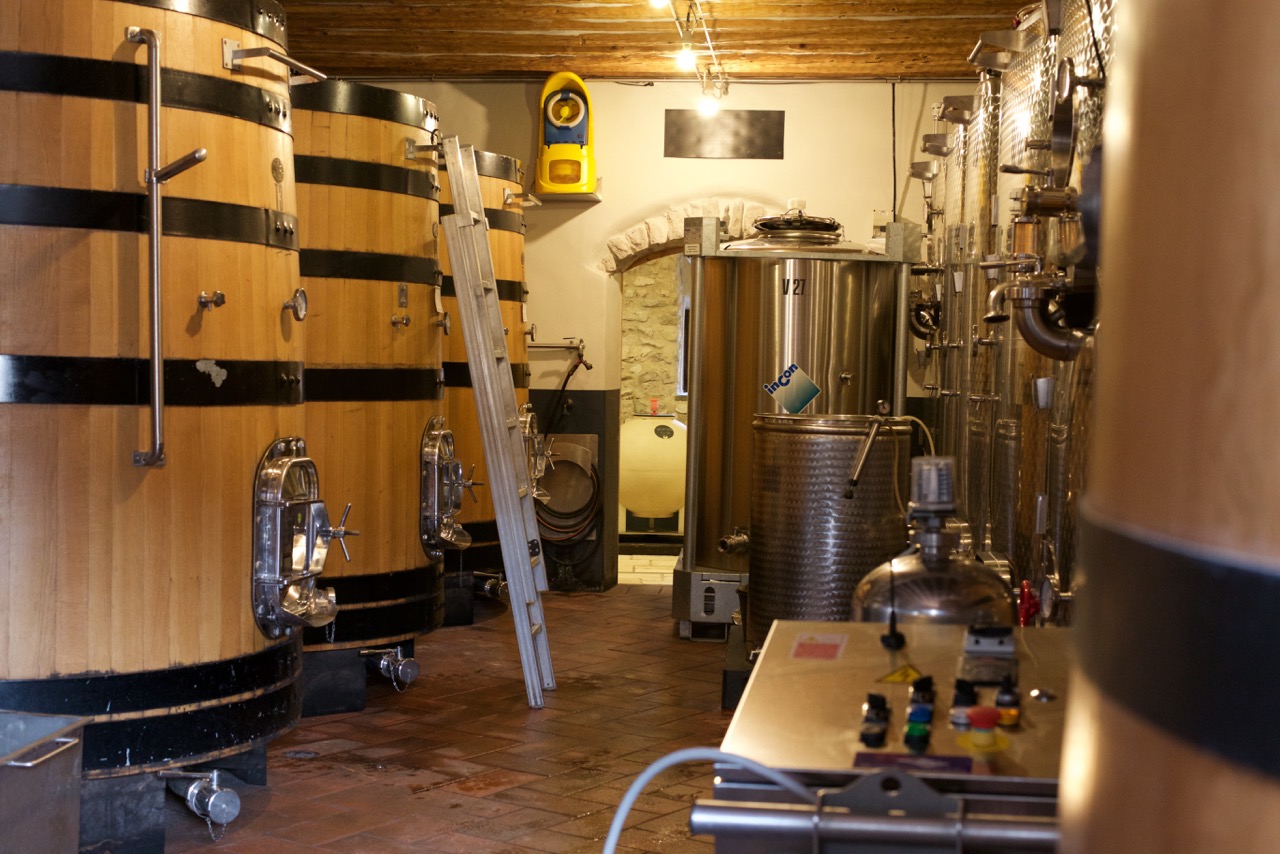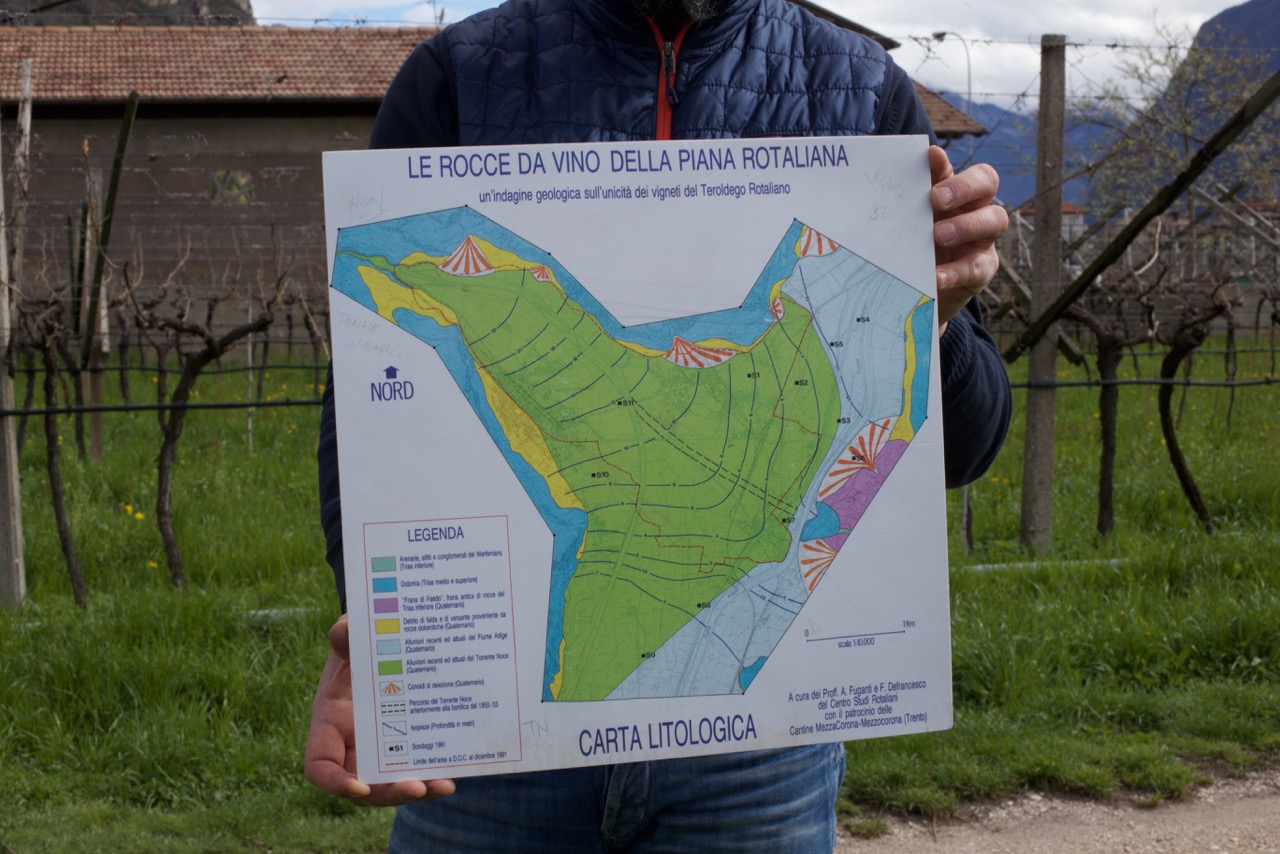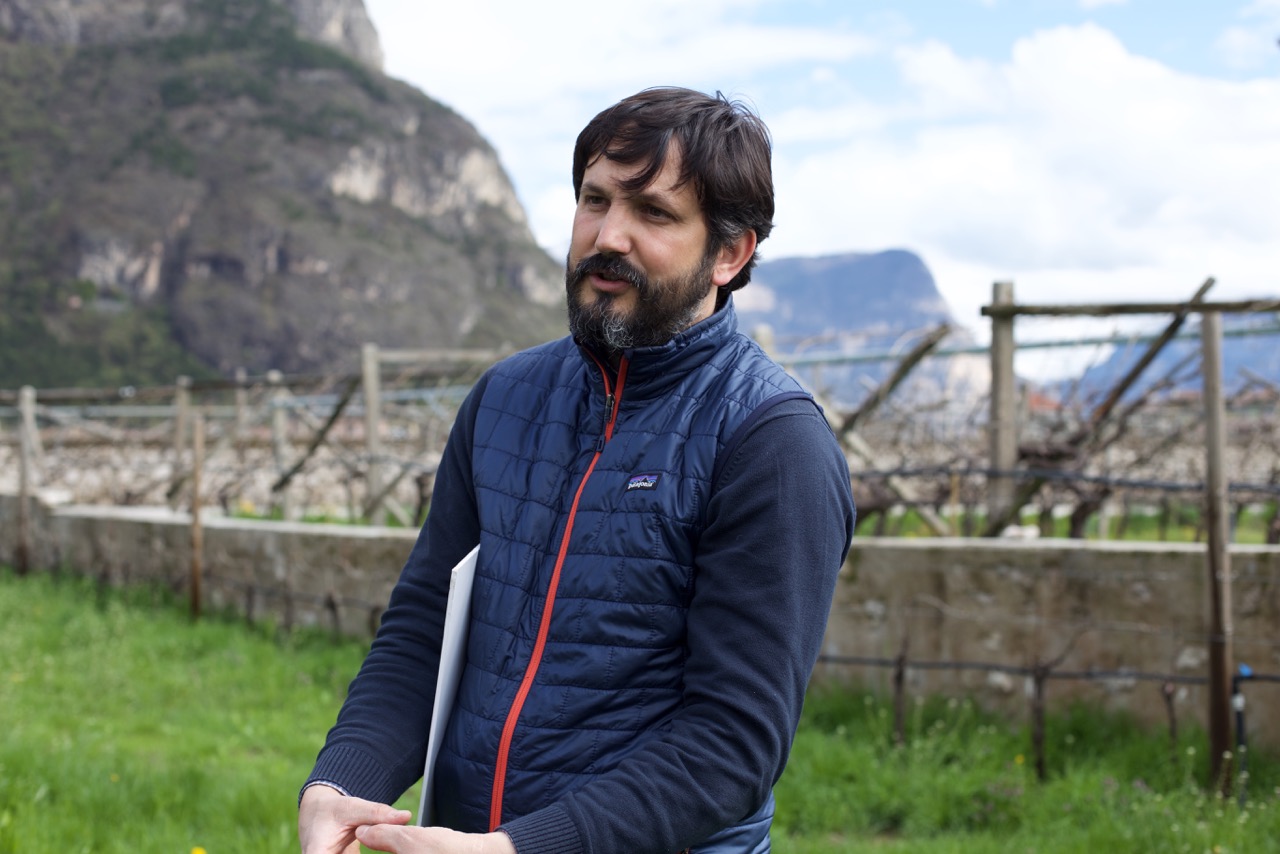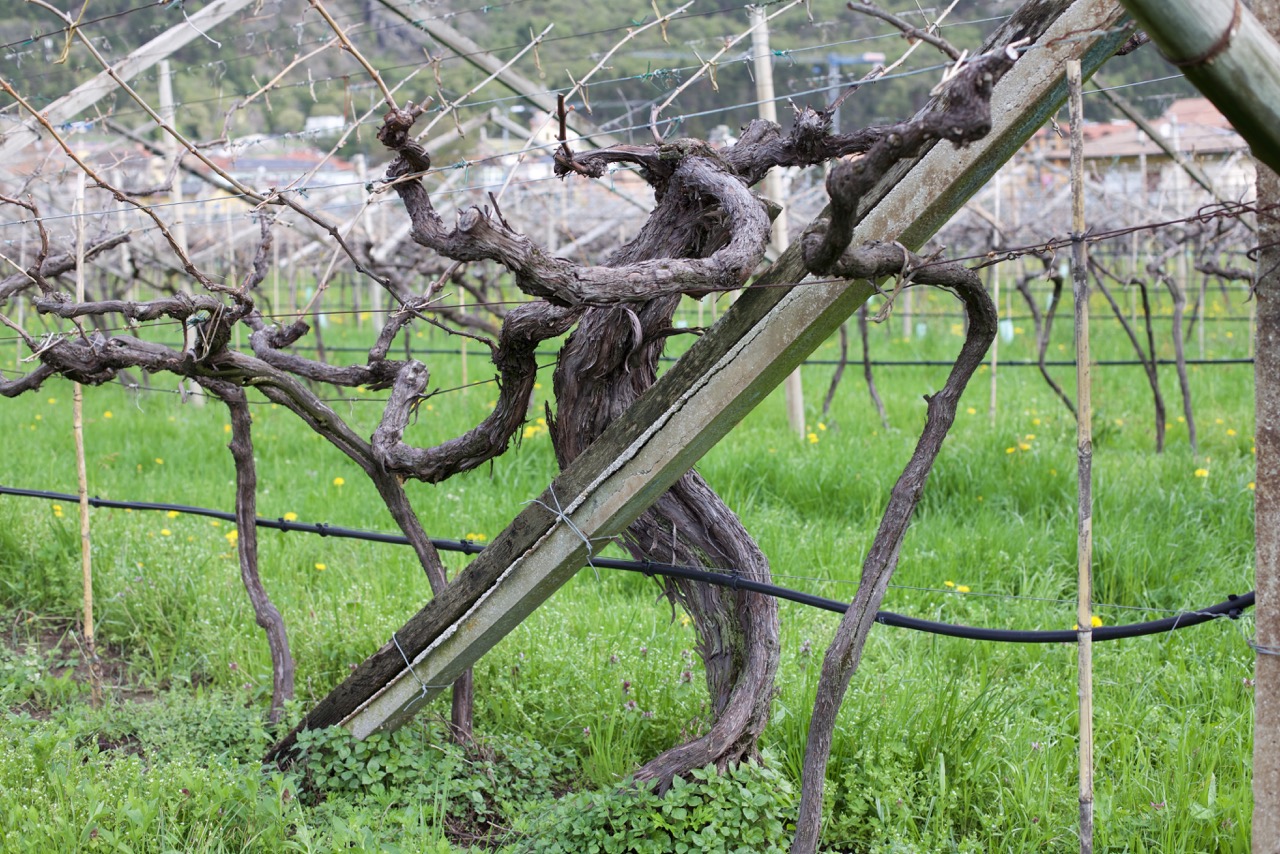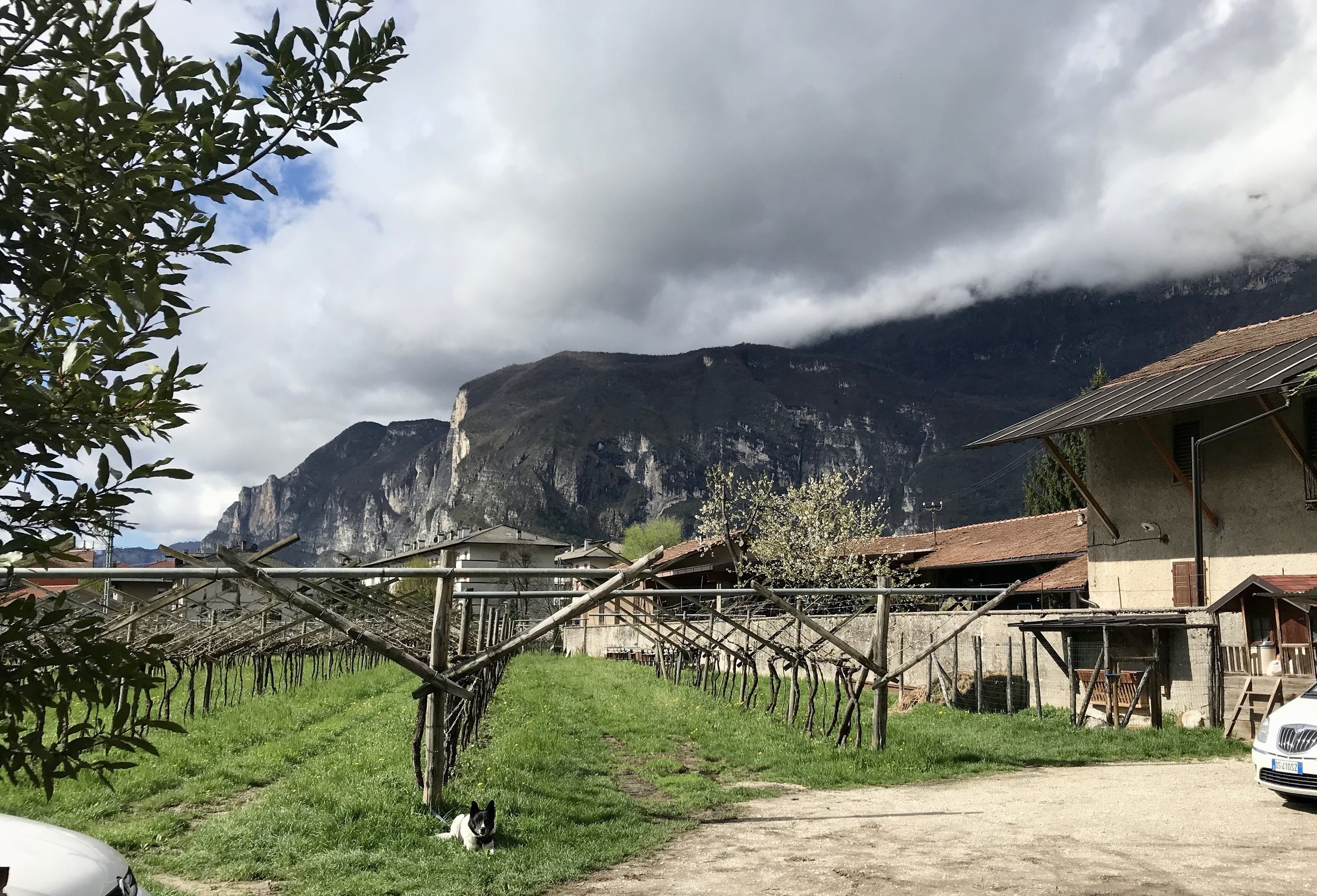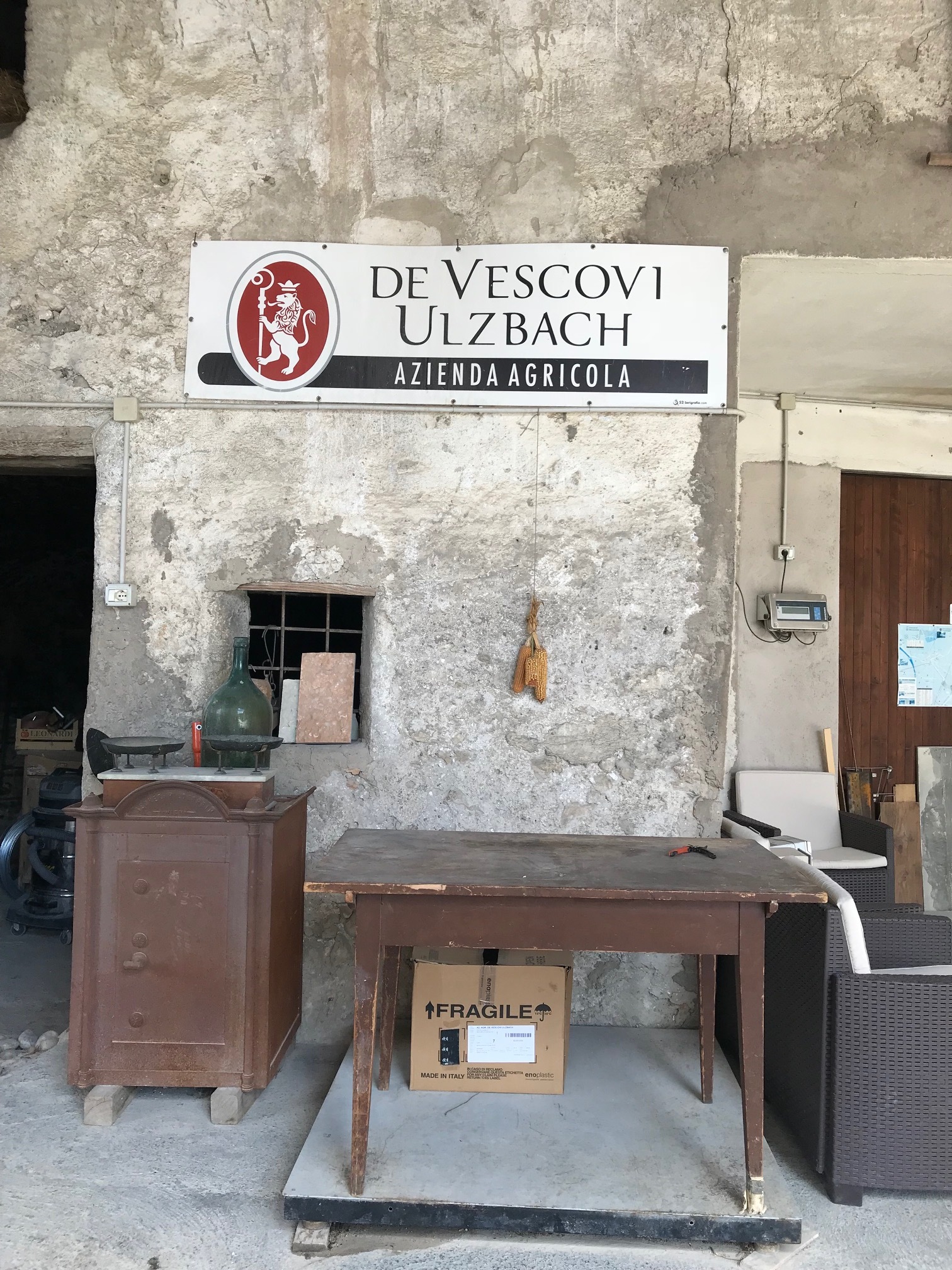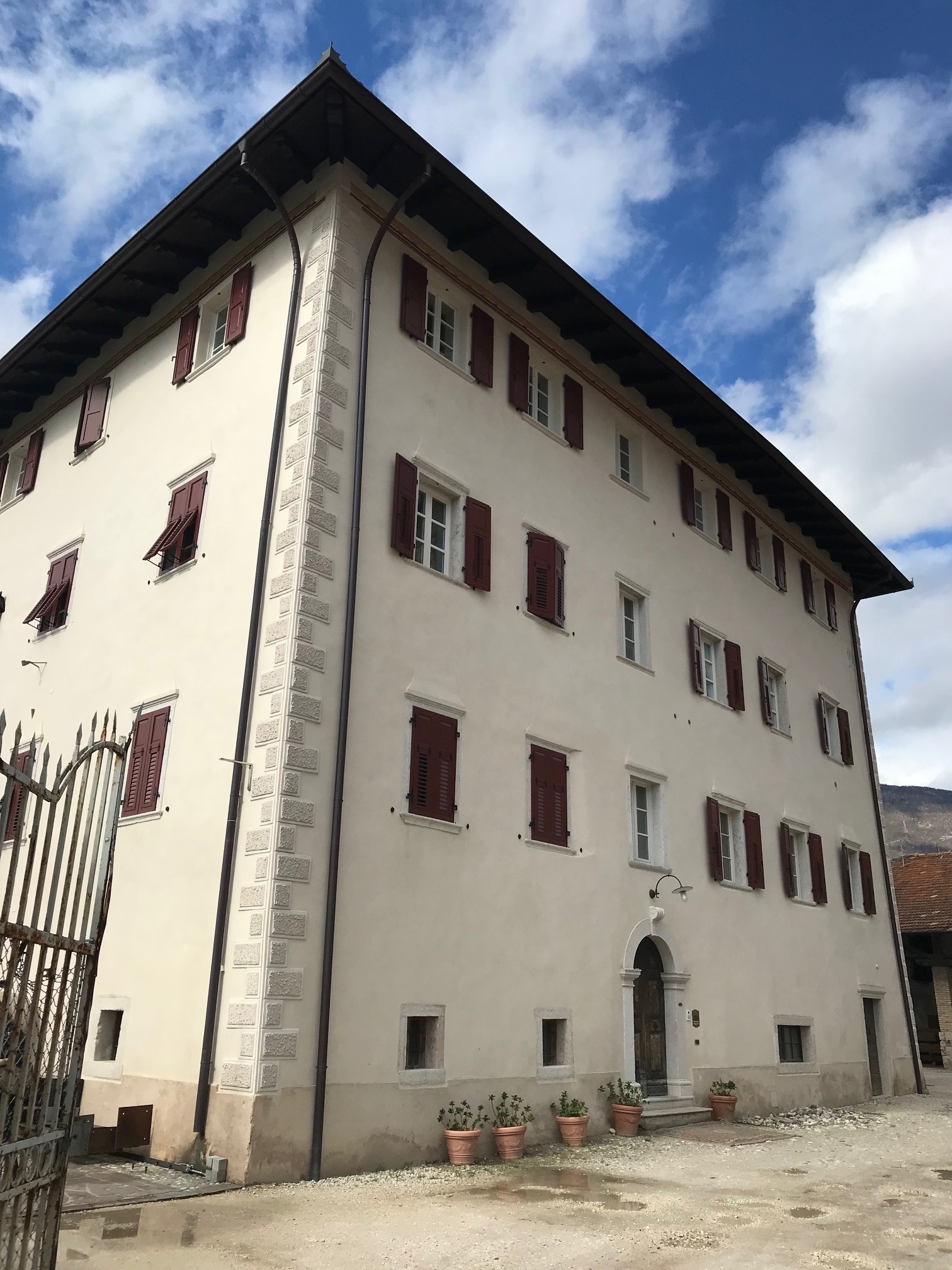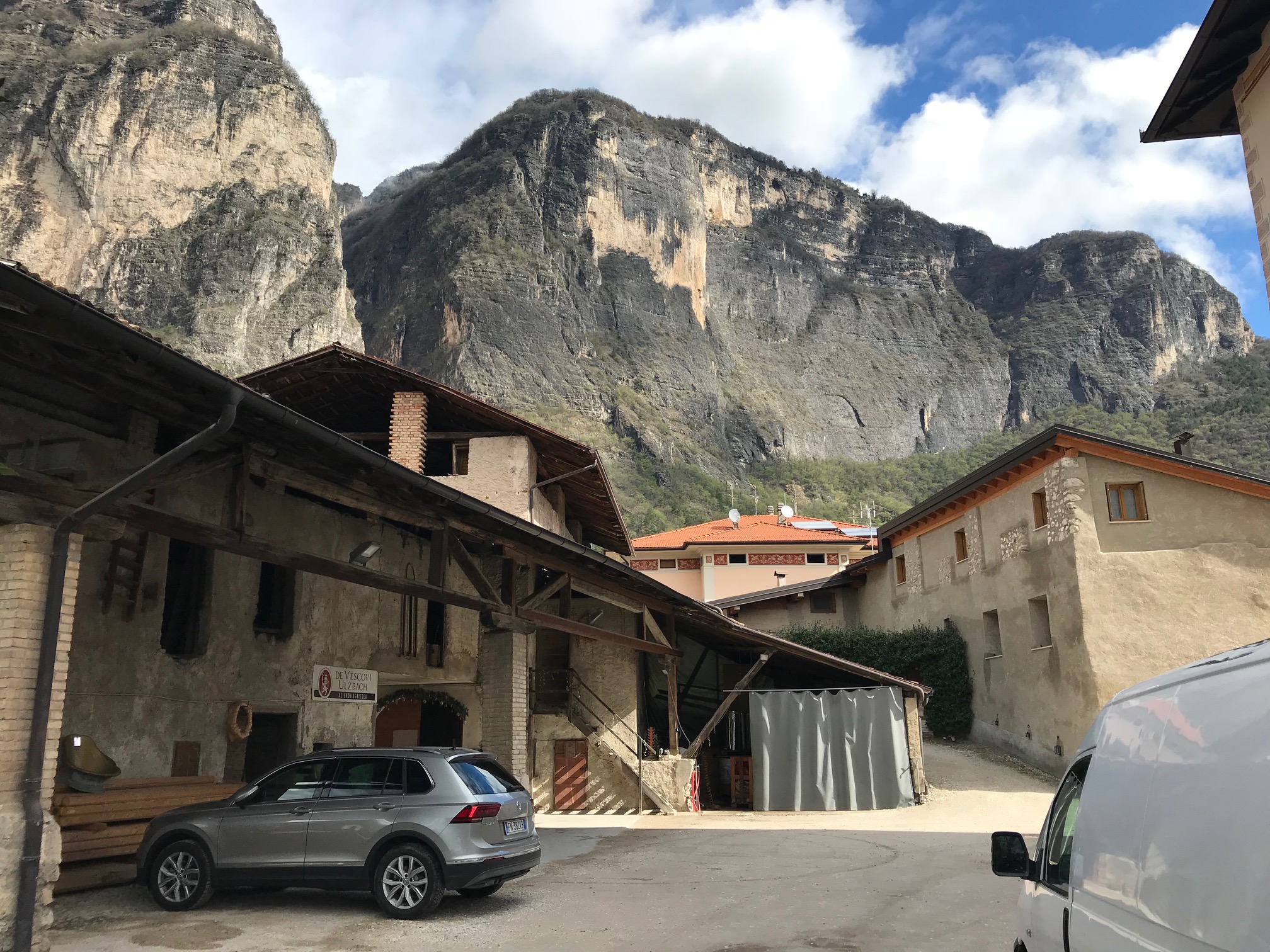De Vescovi Ulzbach
about de vescovi ulzbach:
Teroldego is a high-quality red grape variety native to the region of Trentino, in north central Italy. It is related to Syrah, Lagrein, and Pinot Noir. ‘The recognized, historic grand cru for Teroldego is the Campo Rotaliano, a sandy-gravelly plain born of the alluvial deposits of the Noce stream and the Adige River, found between San Michele all’Adige, Mezzocorona, and Mezzolombardo at about 230 meters above sea level…the Campo Rotaliano is one of the very few documented grand crus related to a specific grape variety in all of Italy…’* At its best, wine made from Teroldego is deeply colored, vibrantly aromatic, meaty, bright, berryish, and sometimes reminiscent of Cabernet Franc, which is a very good thing.
Our Teroldego is from De Vescovi Ulzbach, a historic producer, certified organic, with more than seven hectares of vineyards in the heart of the Campo Rotaliano, at about 220 meters (725 feet) above sea level. The de Vescovi family has been established in this area since the late 1600s, has owned the estate and made wine here since about 1700, and first bottled under their own label in 2003. The average age of the vines is high; some of the older vines, which date back as far as 1930, are still trained to the traditional ‘pergola trentina,’ and are being gradually changed over to the more modern, quality-oriented Guyot system, in order to achieve the ideal balance between vegetative vigor and fruit quality.
The soil is of alluvial origin, with silt, gravel, and pebbles.
_____________________________________________
the wines:
Teroldego 'Rosso Ulzbach'
Made entirely of the Teroldego grape grown in the Piano Rotaliano area near Trento, this is a fresh, charming version of this distinctive variety. The winemaking is complicated but the result is immediately appealing and great for everyday drinking, berryish and open.
All the fruit is produced in the Rauti vineyard, from vines that are trained in the traditional ‘pergola trentina,’ planted in alluvial soil that consists of sand and silt mixed with pebbles and stones. The grapes are organically grown and harvested at the end of September. The fruit is all de-stemmed and partly crushed; part of the must is then macerated at a warm temperature (26-28 degrees Celsius) for 3-5 days in wooden vessels, drained off, and finishes fermentation in unlined cement tanks, followed by natural malolactic fermentation. Selected yeasts are used in both cases. The rest of the must is macerated at a low temperature (4-6 degrees Celsius) in the press, then pressed off and fermented in stainless steel, with malolactic fermentation blocked. (This last is very unusual, the great majority of red wines undergo the second fermentation.)
The result is more straightforward than the process: a deeply colored wine that is fruity, somewhat herbal, lush, silky on the palate and dangerously easy to drink. Very useful red wine, drink it with hamburgers, all sorts of red meat, or of course roast chicken.
Teroldego Rotaliano DOC Classico
Made entirely of organically grown Teroldego grapes, picked around the end of September; bunches are entirely destemmed, 50% of the berries are left whole; fermentation is sometimes carried out with indigenous yeast, sometimes with cultivated yeast, depending on the vintage. Fermentation and maceration take place in both wooden and unlined cement fermenters, for a total of up to 40-50 days. The wine is aged in French oak barrels of between 2,500 and 4,000 liters capacity and in unlined cement tanks for about 10 months. About 2,500 cases are produced.
Color is a gorgeous opaque violet-tinged purple; on nose and palate the wine makes me think of cooler-climate Syrah with hints of Cabernet Franc, very berryish, meaty, some Assam tea notes, some herbal notes, rusty/meaty hints, big but not at all bitter. Fresh palate, long finish with almond note. Drink with red meat, flavorful pasta dishes, cheeses, game…
Teroldego Rotaliano Kretzer DOC
‘Kretzer’ is a German term meaning rosé, and a term used historically in this part of Italy, which was owned by Austro-Hungary until after the first World War. This Teroldego Kretzer is made entirely of Teroldego from de Vescovi Ulzbach’s vineyards, taken immediately from the press as ‘saignée’** (with no maceration), fermented using selected yeast in both stainless steel tanks and wooden fermenters, and bottled after about 4 months in tank.
Notes: middling pink color (not surprising given how deeply colored the variety can be), aroma of wild strawberries and watermelon, fresh on the palate, very interesting food-friendly northern Italian rosé. Try it with salmon, or any meaty fish, or maybe roast pork.
*Ian d’Agata ‘Native Wine Grapes of Italy
** ‘saignée’ means that a fraction of the grape juice is taken from a red wine fermentation shortly after pressing, when it is still very pale in color, then fermented as a rosé.
Bianco 'Planta'
Most of De Vescovi’s vineyards are to be found next to the winery, in the Campo Rotaliano, but this vineyard is about 15 minutes’ drive away, at a much higher altitude, near Vigo di Ton. Higher elevation vineyards are particularly good for white wines, as they tend to preserve acidity; this one is at about 450 meters, or 1,500 feet, above sea level. Producers in the neighboring region of the Alto Adige often have red and white vineyards in separate places too. The blend here is roughly 30% Sauvignon and 30% Pinot Blanc, both typical here; the remaining 40% is the more unusual Incrocio Manzoni Bianco, a historic Italian cross between Pinot Blanc and Riesling. The vines were planted between 2006 and 2009 in clay soils, and are fairly high density, around 7,500 vines per hectare.
The harvest typically occurs at the end of September. The grapes are picked into small boxes, to make sure the fruit arrives in the cellar in good condition. The bunches are held in the press at low temperature overnight to extract flavors from the skins, then the fruit is pressed and the must is fermented in a variety of containers (stainless steel, cement, and barriques) using selected yeasts. The wine is bottled in the late spring following the vintage.
Notes: bright pale yellow appearance; complex aroma of wet stones, herbs, lime peel, with a hint of apricot. In the mouth the same notes with a touch of wood showing; fairly full-bodied but with good balancing acidity and a long finish. We don’t have many wines in our selection with wood notes but this is very well done, and not intrusive at all. I think this will show very well with a few years of age, it has the structure for it. Drinking suggestions: roast chicken or substantial fish dishes.
